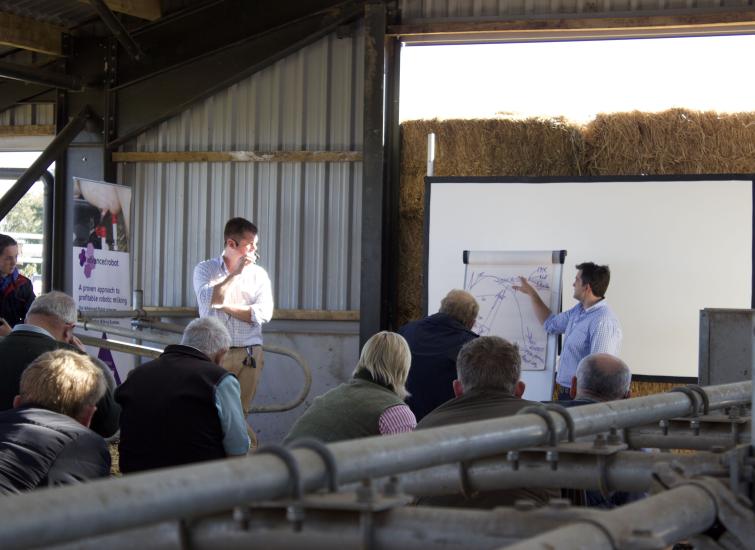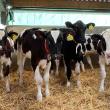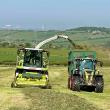Advanced Robot’s experience means they are always challenging me to get the best out of the cows, they maintain the herd’s health status whilst also improving performance.
Making Successful Changes
Eoghan Mullery discusses the key considerations when preparing for Robots

Over the past ten years, Advanced Robot has seen a significant shift of customers moving from parlour systems onto robotic milking systems. We’ve gained much experience working with our clients through this period of change. Whether it’s been 2 or 3 times a day milking systems, moving to retro-fit robots or building a brand new shed, the Advanced Robot team have learned a lot. We know the likely pitfalls with diets, robot access, how to increase visits etc…
So, what are the key areas to concentrate on when moving from a parlour onto robots?
The Cow
Start to think about what the cow will be going through, what will change for her day to day routine? Cows are creatures of habit and we’re about to change that habit, so anything we can do to make the transition easier will help! Think about change in stages:-
1. The long term
The single biggest change for a cow moving onto robots is she’s no longer ‘herded’ into a parlour collect yard. To effectively milk ‘voluntarily’ she will need to be confident on her feet. If she’s not, she simply won’t put herself in an unfamiliar situation - meaning no visits and no milk! Digital dermatitis and/or lameness have been shown to dramatically reduce cow visits. An effective digital dermatitis control plan should be implemented pre robots, with a lower tolerance level accepted compared to a parlour herd. Consideration should also be given to mineralisation, as this is an effective way to improve foot health. Advanced Robot have worked closely with our partners at Zinpro to create a ‘robot’ specification mineral.
2. The short term
If concentrate is fed in the existing parlour, good practice would be to switch the cows onto the robot concentrate before moving.
The Shed
Creating a calm environment will help with the transition. Well lit areas, especially around the robots, helps to keep cows calm and any nervous cows will start to associate the robot area with safety, removing some of the apprehension in approaching it.
It’s worth considering that too many obstructions can have a negative effect on visits. However, insufficient or ‘temporary’ gating can be a disaster. Cows don’t always react in the way we want them to, they can be stubborn, often going in the wrong direction! A good gating system, whether that be automatic raise and drop gates, swing over or side hung will keep cows calm. These ‘collect pens’ should be easy to work and ideally be a one man operation.
The Farm Team
I’ve been lucky enough to be involved in many robot set ups and the single most important element to success is often not the cows, or the robots - it’s the people operating them! Simply put - calm people lead to calm cows. We tend to find that one week into a robot start up is generally when the tiredness kicks in and cows can sense when an operator’s patience starts to wear thin. So, no sticks or loud voices and regular staff changes can make life easier for man and cow!
Once the robots are ready for commissioning, we start to implement the associated aspects of the Advanced Robot triangle.
Nutrition
We can help formulate a balanced ration at the trough and a rumen friendly high energy nut.
Robot Settings
In the early stages the robots are set to allow the cows to milk frequently with a fixed amount of feeding per visit - a training phase. These settings will need to be constantly monitored and reviewed.
Health & Management
It’s now that we will reap the benefit from implementing the considerations above in the build-up to robot start up day.
If you’re making or have made the transition onto robots, why not get in touch?
〈 BACK




